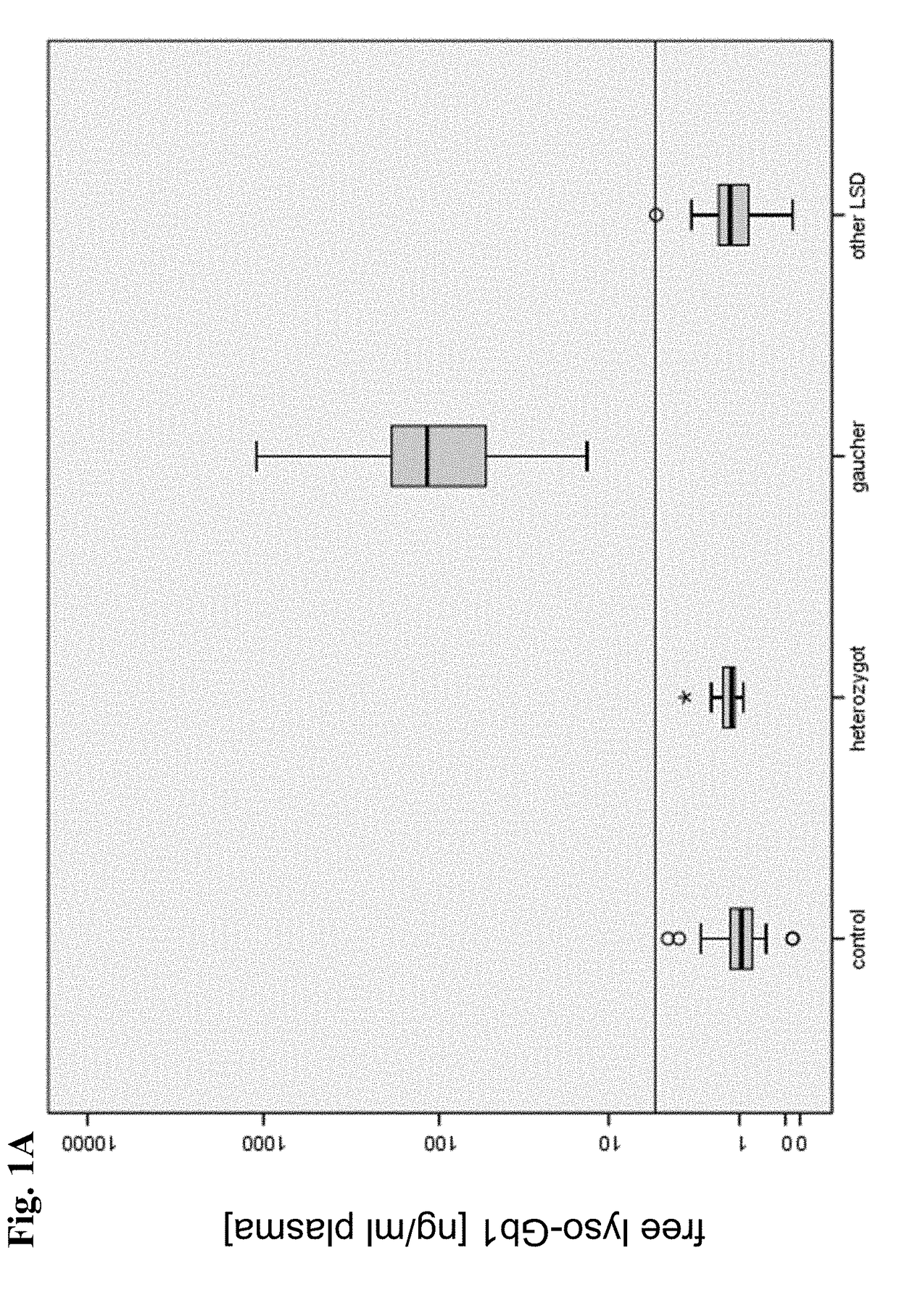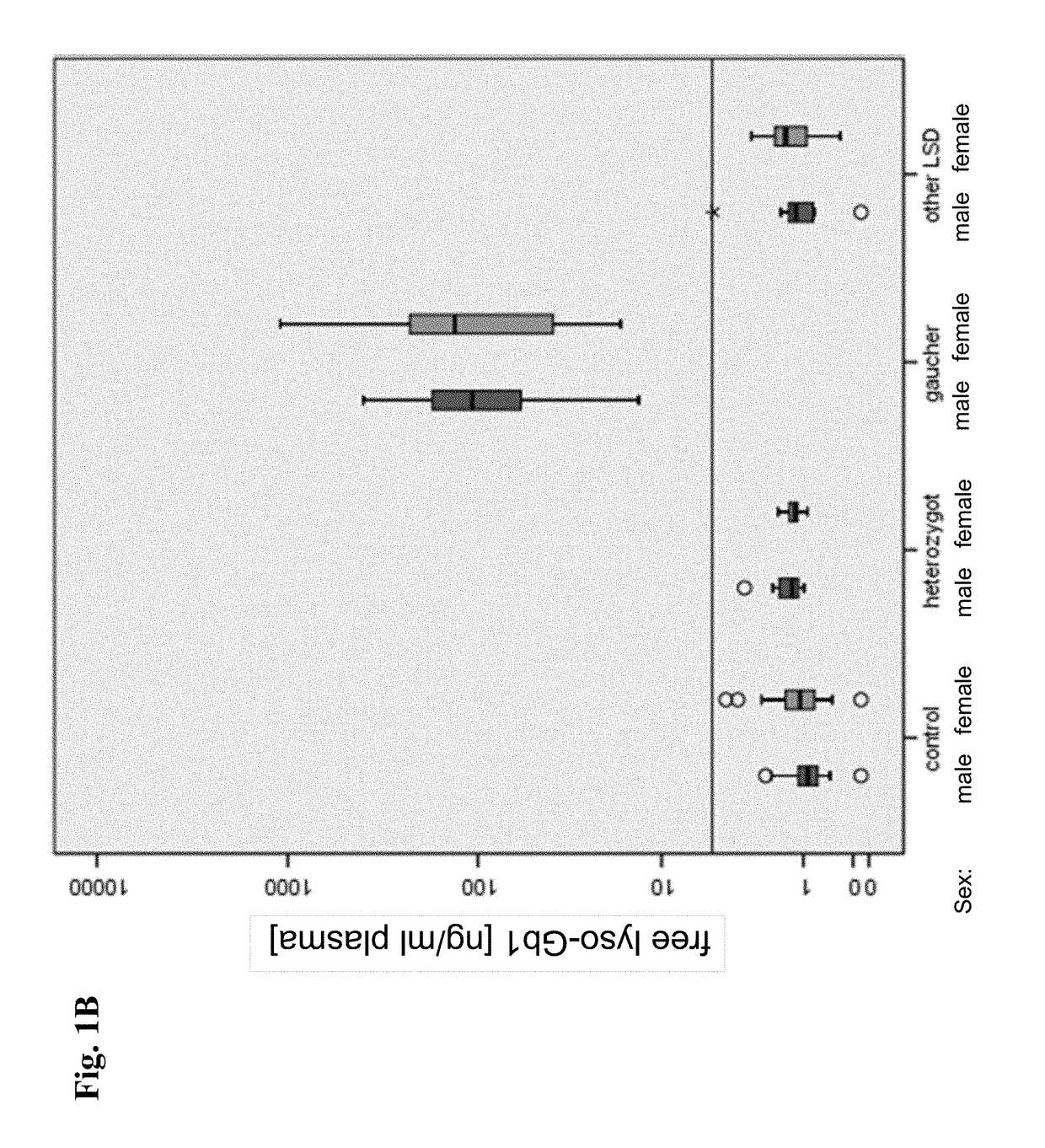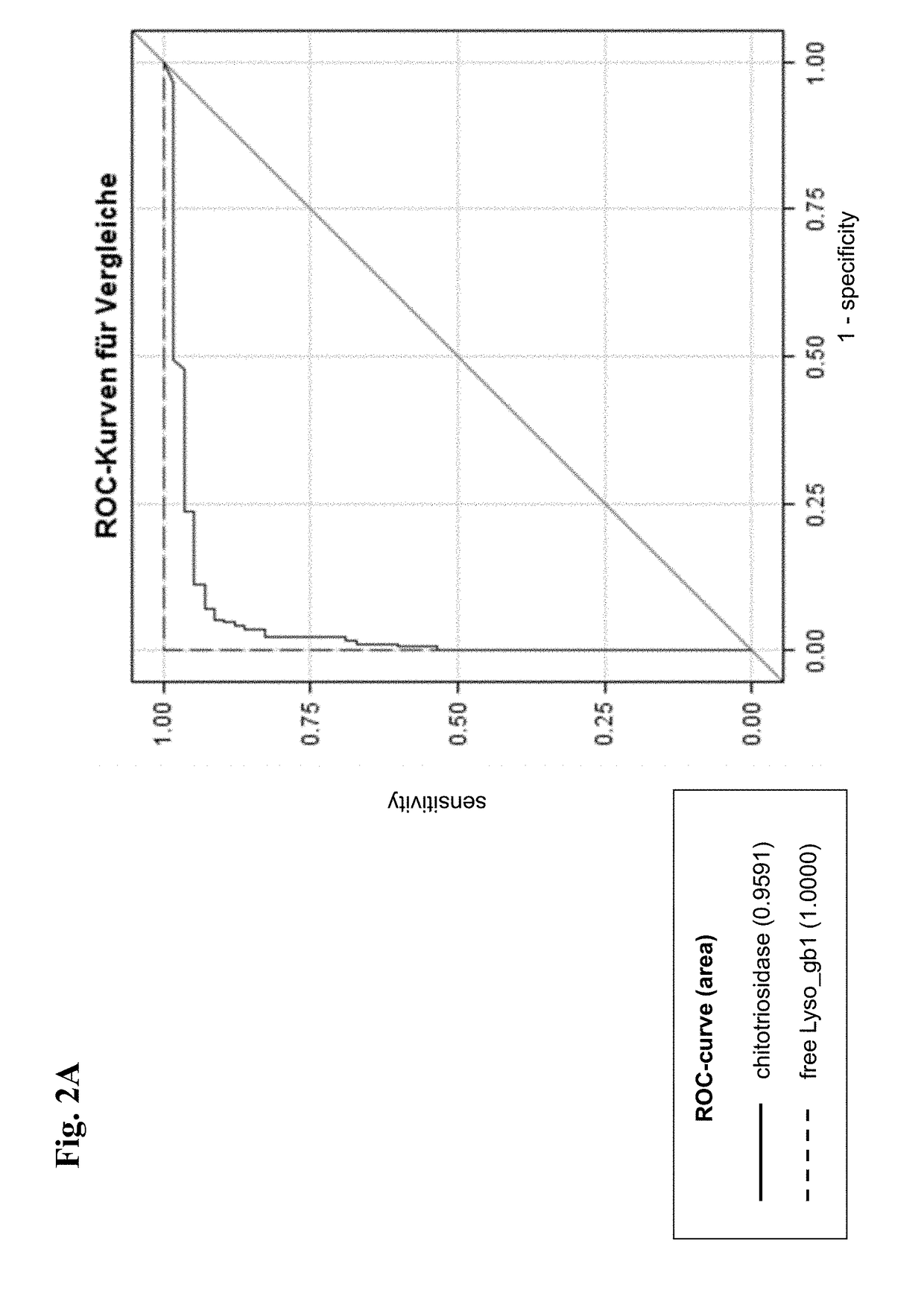Method for the Diagnosis of Gaucher's Disease
a gaucher's disease and diagnostic method technology, applied in the field of gaucher's disease diagnostic method, can solve the problems of gaucher's disease not being applicable as a biomarker, gb1 is not applicable, and the specificity and sensitivity of the method are low
- Summary
- Abstract
- Description
- Claims
- Application Information
AI Technical Summary
Benefits of technology
Problems solved by technology
Method used
Image
Examples
example 1
r the Detection of Free Lyso-Gb1 in Human Serum
[0258]Equipment
[0259]For detecting free lysoGb-1 in a sample of plasma from a subject the following equipment was used.
Apparatus / Piece ofEquipmentType / ProducerHPLC pumpSeries 200, Perkin Elmer, USASample injectorSeries 200, Perkin Elmer, USAColumn ovenSeries 200, Perkin Elmer, USAMass selective detectorAPI 4000 Q TRAP, AB SCIEX, USA / CanadaMulti-tube vortexerHenry Troemner LLC, USADVX-2500Vortex mixerVortex Genie 2; Scientific Industries, USACentrifugeMegafuge 1.0; Heraeus, GermanyMultipette(s), pipette(s)Eppendorf, GermanyWater bathSW21-C, Julabo, Germany
[0260]Reagents
[0261]For detecting free lysoGb-1 in a sample of plasma from a subject the following reagents were used.
[0262]To that extent that values depend on temperature (e.g. the pH value) such values were determined at a temperature of 25° C.
ReagentPurityAcetonitrile (ACN)HPLC-grade or Gradient gradeAcetone99.5%Dimethylsulfoxide (DMSO)HPLC gradeEthanol (EtOH)p.a., 96%Formic acid (F...
example 2
esting and Classification of Study Participants
[0303]After consenting of patients to participation in the study, patients were subjected to a genetic testing for mutations of the glucocerebrosidase gene. Accordingly, 5 to 10 ml of EDTA blood were sequenced according to Seeman et al. (Seeman et al., 1995). Were appropriate other genes beside the glucocerebrosidase gene were sequenced in addition, particularly in controls. Furthermore the chitotriosidase gene was sequenced for detection of the 24 bp duplication as mentioned above. Said genetic testing was controlled using test samples of age and sex matched control patients.
253 subjects were tested.
[0304]According to the result of the above described genetic testing, patients participating in the study were classified into the following groups:
1.) Patients having Gaucher's disease: gold standard for the diagnosis was the detection of two pathogenic mutations within the glucocerebrosidase gene, either homozygous or compound heterozygou...
example 3
of Gaucher's Disease Using Free Lyso-Gb1 as a Biomarker
[0311]The protocols described in Example 1 above were used to generate HPLC-mass spectrometric chromatograms of 485 blood samples derived from the 253 subjects. Exemplary HPLC-mass spectrometric chromatograms displaying peak intensity of free lyso-Gb1 and IS of three samples from two Gaucher's disease patients and one healthy control person are depicted in FIG. 5A, FIG. 5B and FIG. 5C.
[0312]Gold standard for the classification of patients into the group “Gaucher”, was based on the sequencing of the entire coding area as well as the the intron-exon-boundaries of the glucocerebrosidase gene according to the genetic testing as described in Example 2 resulting in the detection of either a homozygous mutation or a compound heterozygosity.
[0313]The results of a determination of the levels of Chitotriosidase or CCL18 in samples from patients were available in 58 or 44 Gaucher's disease patients, respectively. Said results were obtained...
PUM
| Property | Measurement | Unit |
|---|---|---|
| diameter | aaaaa | aaaaa |
| time | aaaaa | aaaaa |
| temperature | aaaaa | aaaaa |
Abstract
Description
Claims
Application Information
 Login to View More
Login to View More - R&D
- Intellectual Property
- Life Sciences
- Materials
- Tech Scout
- Unparalleled Data Quality
- Higher Quality Content
- 60% Fewer Hallucinations
Browse by: Latest US Patents, China's latest patents, Technical Efficacy Thesaurus, Application Domain, Technology Topic, Popular Technical Reports.
© 2025 PatSnap. All rights reserved.Legal|Privacy policy|Modern Slavery Act Transparency Statement|Sitemap|About US| Contact US: help@patsnap.com



